




An Introduction to Trees
What are the similarities between paper, maple syrup, rubber, and medicine? All of them are obtained from trees! Trees come in all shapes and sizes, and many species provide valuable resources to humans. These resources can provide a steady income for people who create and sell forest products if they are produced responsibly.
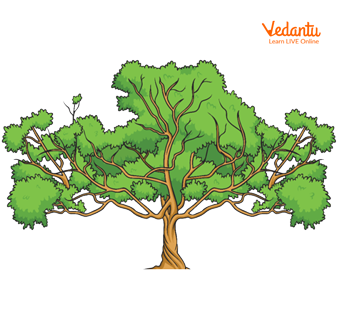
A Tree
Since trees clean the air we breathe, they are our best friends. They also clean the water and soil with the help of the roots by holding the soil particles and filtering out water. People who live near trees are also healthier, more fit, and happier than those who do not.
What are Trees?
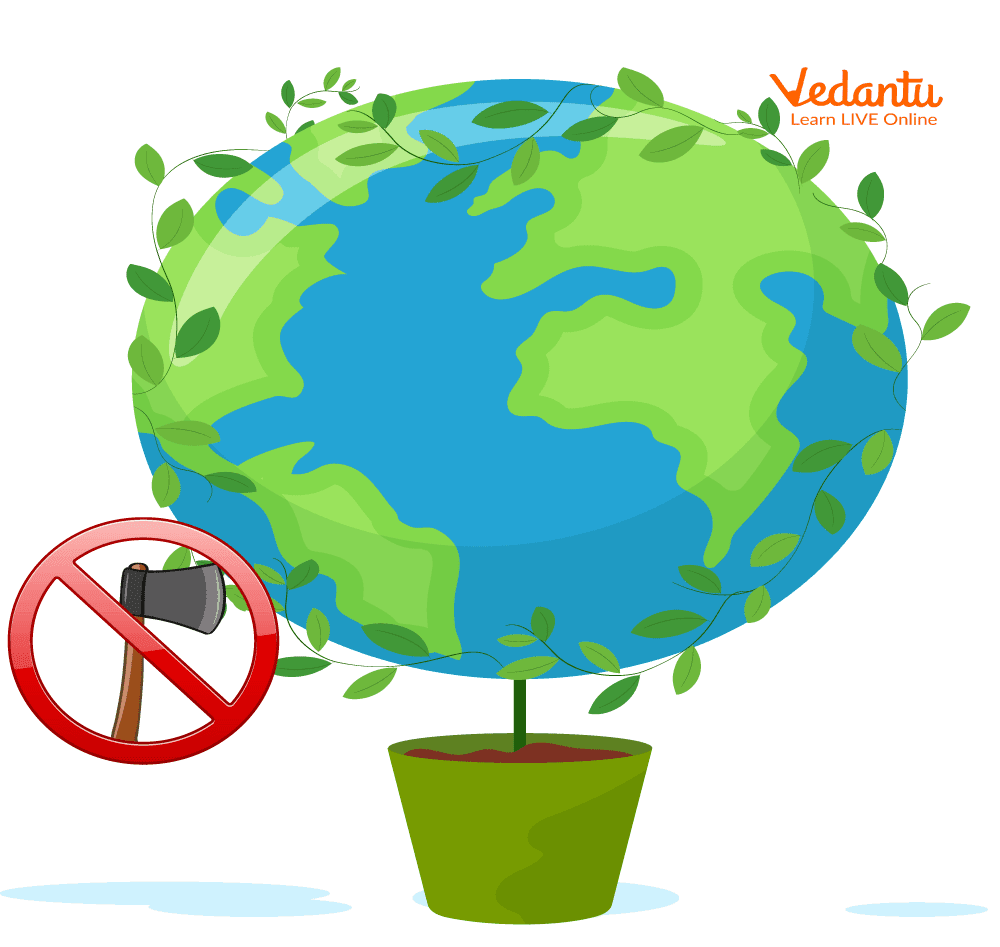
Say No To Cutting Trees
Nature is adored by all! The main distinguishing feature of trees is how distinct they are from others, and trees or plants with similar characteristics are classified into families.
A tree is a tall plant with a lengthy lifespan. It features a single stem or trunk with supporting branches for the leaves. A tree's root system extends below the surface of the earth, serving as an anchor and storing the water and nutrients required for the plant to flourish. The process by which plants convert carbon dioxide, water, and sunshine into oxygen and sugar-based energy is known as photosynthesis.
Parts of a Tree
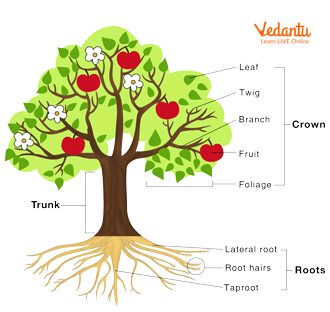
Parts of a Tree
Following are the parts of the trees.
Roots: The roots of trees are the parts of the tree that remain in the soil. They take in water and nutrients from the soil on behalf of the entire tree.
Trunk: The trunk of a tree provides support for all of the tree's parts and gives the tree its shape. Water, nutrients, and food are stored and transported to all parts of the plant.
Crown: The crown of the tree is the topmost part of the tree, containing all of the leaves and branches. It comes in a variety of shapes and sizes to accommodate various trees.
Branches: Branches evenly distribute leaves in the air. They grow in various positions to ensure that the leaves receive adequate air and sunlight.
Leaves: Leaves are similar to a tree's food factories. In the photosynthesis process, they produce food for the tree and provide vital oxygen to animals and humans.
Knowing Trees Better: Trees Information
Trees grow taller, wider, and deeper as they age. The growth of new cells at the tips of a tree's branches causes it to grow taller. They also spread deeper into the ground, where they form roots that collect water and nutrients from the soil.
The roots, like the branches, grow at the tips. Tree trunks and branches become wider as well. Each ring represents a year's worth of development. We can determine the age of trees by counting their rings.
Types of Trees
Deciduous and Evergreen trees are the two main types of trees.
For a portion of the year, deciduous trees lose all of their leaves. This occurs in cold climates during the autumn, leaving the trees bare throughout the winter.
Evergreen trees don't lose all of their leaves at once; there is always some greenery on them.
Tree Description
Deciduous Trees
Some examples of Deciduous trees are oak, maple, and elm trees. In the fall, they shed their leaves and in the spring, they sprout new ones.
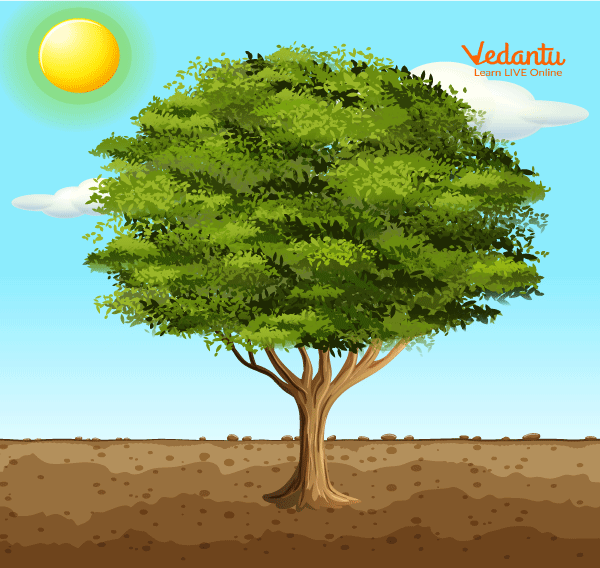
Oak Tree
Oak: Oak tree is common in places where the weather is mild. Oaks are useful in a variety of ways. Many types of oak have valuable wood that is used in carpentry and construction.
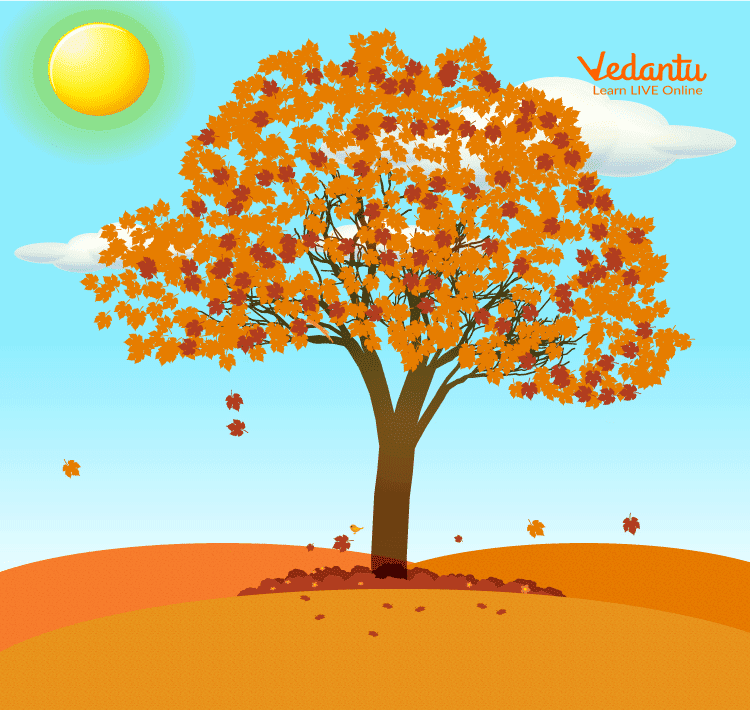
Maple Tree
Maple: Maple trees and shrubs are commonly found in city parks and along city streets. Because their leaves form a thick structure, they make good shade trees.
Evergreen trees
An evergreen is a plant whose leaves stay healthy and green for more than one growing season. In contrast to deciduous plants, which fully lose their foliage in the winter or dry season, this also applies to plants that only retain their leaves in warm climes. Examples of evergreen trees are pine (Pinus) and fir (Abies).
Benefits of Trees
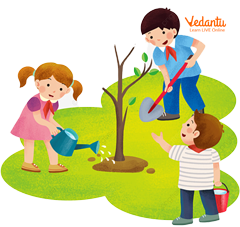
Planting Trees
Trees provide us with food, wood, and a variety of other essential materials.
They provide us with clean air and aid in the reduction of pollution.
However, as humans, we are destroying trees for land and wood. The number of trees on the planet is rapidly decreasing. As a result, many animals have become endangered, and pollution levels have increased.
We must recognize that trees are an essential component of the ecosystem.
Plant as many trees as you can around your house.
Also, educate others about the value of trees.
Summary
Almost everyone is aware of the value of trees and other live plants. They enhance the beauty of our surroundings, clean the air, serve as sound barriers, produce valuable oxygen, and aid in energy conservation by providing cooling shade in the summer and wind reduction in the winter.
FAQs on Trees - Our Support System
1. What is the significance of trees?
The world's longest living organism and one of the most amazing natural resources are trees. Trees are extremely important. They provide oxygen, store carbon, stabilise the soil, and provide life to the world's wildlife as the largest plants on the planet. They also provide us with tools and shelter materials. Trees provide us with food, wood, and a variety of other essential materials. They provide us with clean air and aid in the reduction of pollution. It is a boon to the creatures.
2. What do trees provide us?
Trees provide us the following things:
Trees absorb thousands of litres of stormwater, which helps to prevent flooding and soil erosion.
Humans are used to providing resources.
Increase the number of nutrients in the soil.
Provide food and medicine.
They cause precipitation.
3. Why is it essential to protect trees?
Trees directly benefit the environment by providing oxygen, improving air quality, reducing climate change, conserving water, preserving soil, and providing habitat for wildlife. Photosynthesis is the process by which trees take in carbon dioxide and produce oxygen for us to breathe.









